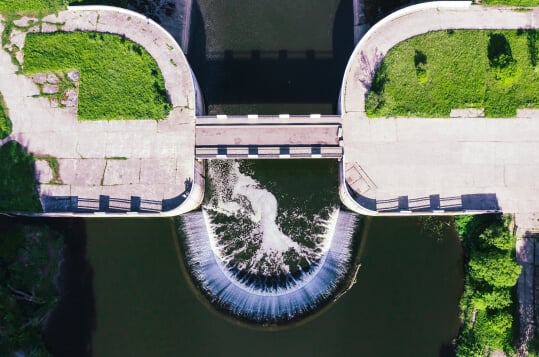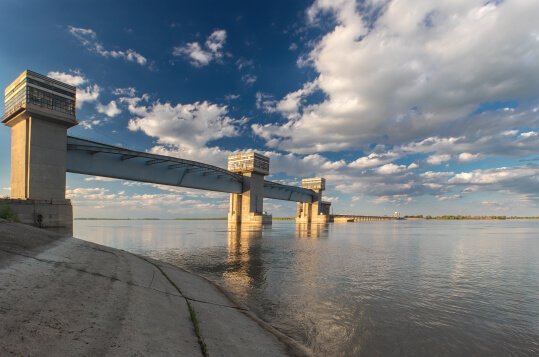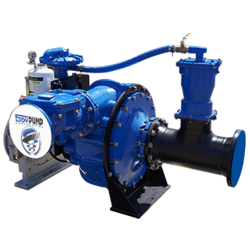Application of EDDY Pump in Water District



Application of Our Slurry Pumps in Water District

- Dredging and Sediment Removal: A slurry pump dredge is crucial for dredging operations, which involve the removal of sediment, silt, and debris from water bodies, channels, and reservoirs. By effectively transporting the sediment-laden slurry, these pumps help maintain proper water depths, prevent flooding, and ensure the efficient functioning of waterways.
- Wastewater Treatment: An industrial slurry pump plays a role in wastewater treatment processes, assisting in pumping sludge and other solid-laden fluids. These pumps facilitate the movement of slurry through treatment stages, including thickening, dewatering, and disposal, helping to separate solids from liquids and reduce the volume of waste.
- Sand and Gravel Extraction: In cases where sand and gravel are extracted from water bodies for construction purposes or to maintain navigation channels, a high solids pump is used to transport the mixture of water, sand, and gravel to processing or storage areas.
- Mining and Industrial Applications: The heavy-duty slurry pump is commonly used in mining and industrial operations within a water district. They help move abrasive slurries containing minerals, ores, and other solids, supporting mineral extraction and processing.
- Environmental Cleanup: A slurry transport pump can be employed for environmental cleanup efforts, such as removing contaminants from polluted water bodies or managing hazardous waste materials in a controlled manner.
- Flood Control: During flood events, slurry pumps can assist in removing excess water from flooded areas, aiding in flood control and mitigation efforts.
- Reservoir Maintenance: The high solids pump can help maintain reservoirs by moving accumulated sediment to designated areas, ensuring the reservoir’s capacity and water quality are preserved.
- Construction and Infrastructure Projects: A slurry transport pump is utilized in various construction projects, including building foundations, tunnels, and underground structures, where removing excess water and slurry is necessary.
CALL FOR SALES OR SUPPORT
If you need help with Pump Selection, Sales or Engineering Support
Call 619-345-5446

Application of EDDY Pump’s Hydraulic Dredging in Water District

- Channel Maintenance: Hydraulic dredger maintains the depth and navigability of channels, rivers, and waterways. By removing accumulated sediment and silt, the dredging process ensures safe passage for boats, ships, and other vessels.
- Harbor and Port Dredging: Ports and harbors often require regular dredging to accommodate larger vessels, maintain shipping channels, and prevent silt buildup that could hinder maritime operations.
- Navigational Watercourse Dredging: A slurry pump dredge is essential for keeping navigational watercourses clear and free from obstructions, such as sandbars and debris, to facilitate the safe and efficient transportation of goods and people.
- Flood Control: Hydraulic dredging equipment can create or maintain flood storage areas, basins, or diversion channels. By increasing the capacity of these areas, excess water can be temporarily stored during heavy rainfall or flood events, helping to mitigate potential flood damage.
- Reservoir and Lake Maintenance: Slurry pump dredge removes sediment and organic matter that accumulate in reservoirs, lakes, and other bodies of water over time. This helps maintain water storage capacity, improves water quality, and enhances recreational opportunities.
- Environmental Restoration: Dredge pump systems are utilized for restoring wetlands, marshes, and aquatic habitats. It can help reestablish natural water flows, remove invasive species, and create conditions conducive to native plant and animal species.
- Sediment Remediation: In areas where sediment contamination is a concern, hydraulic dredger can be employed to remove polluted sediments, preventing the spread of contaminants and improving overall water quality.
- Beach Nourishment: Coastal areas may undergo hydraulic dredging to replenish eroded beaches with sand, ensuring protection against coastal erosion and enhancing recreational value.
- Agricultural Water Management: Hydraulic dredging can clear irrigation channels, drainage ditches, and water conveyance systems in agricultural areas, ensuring efficient water distribution and drainage.
- Infrastructure Projects: Hydraulic dredging equipment is often required for construction and infrastructure projects involving bridges, pipelines, and underwater installations. It clears the way for foundation work and prevents sediment accumulation that could impact the stability of structures.




